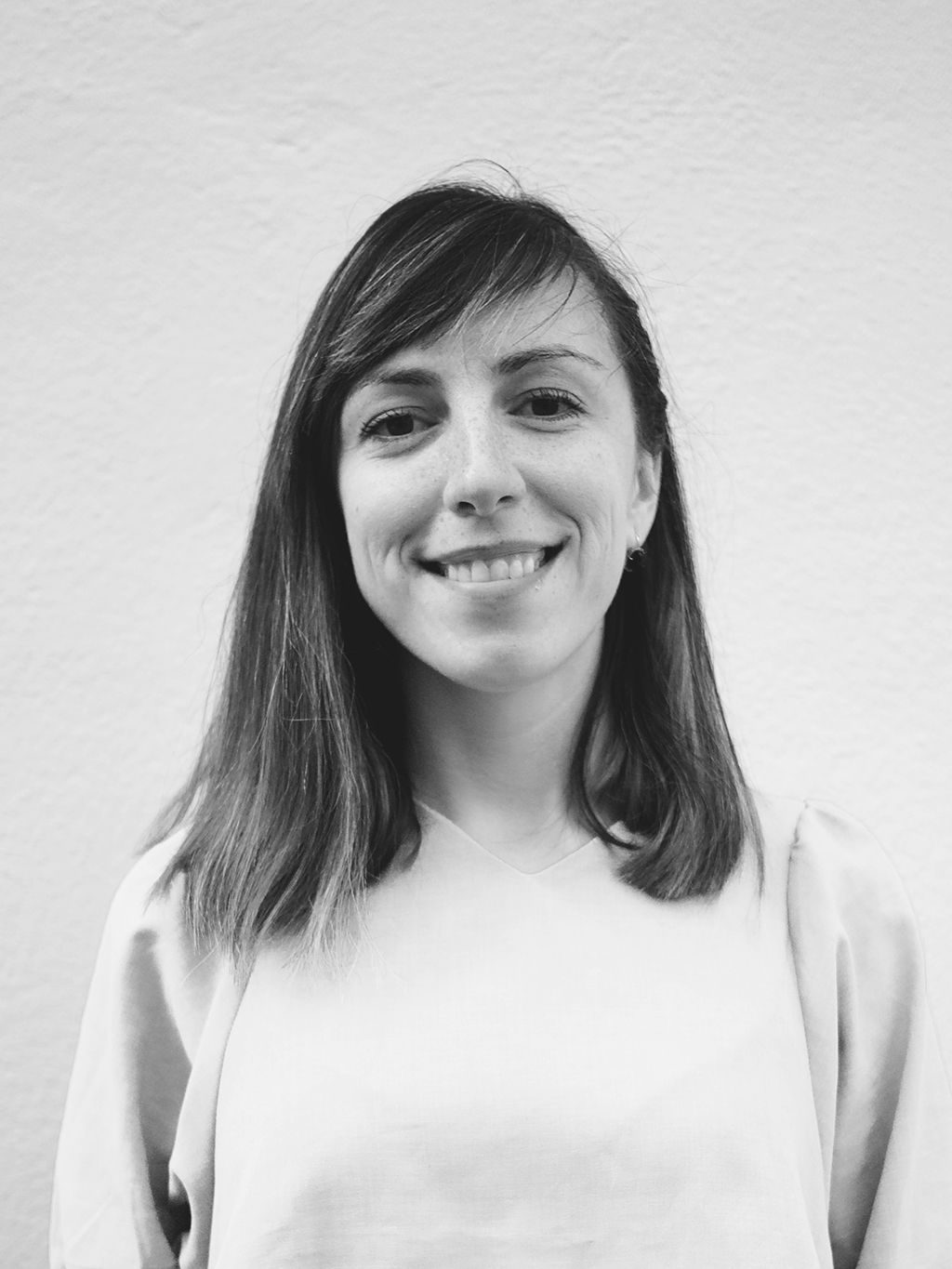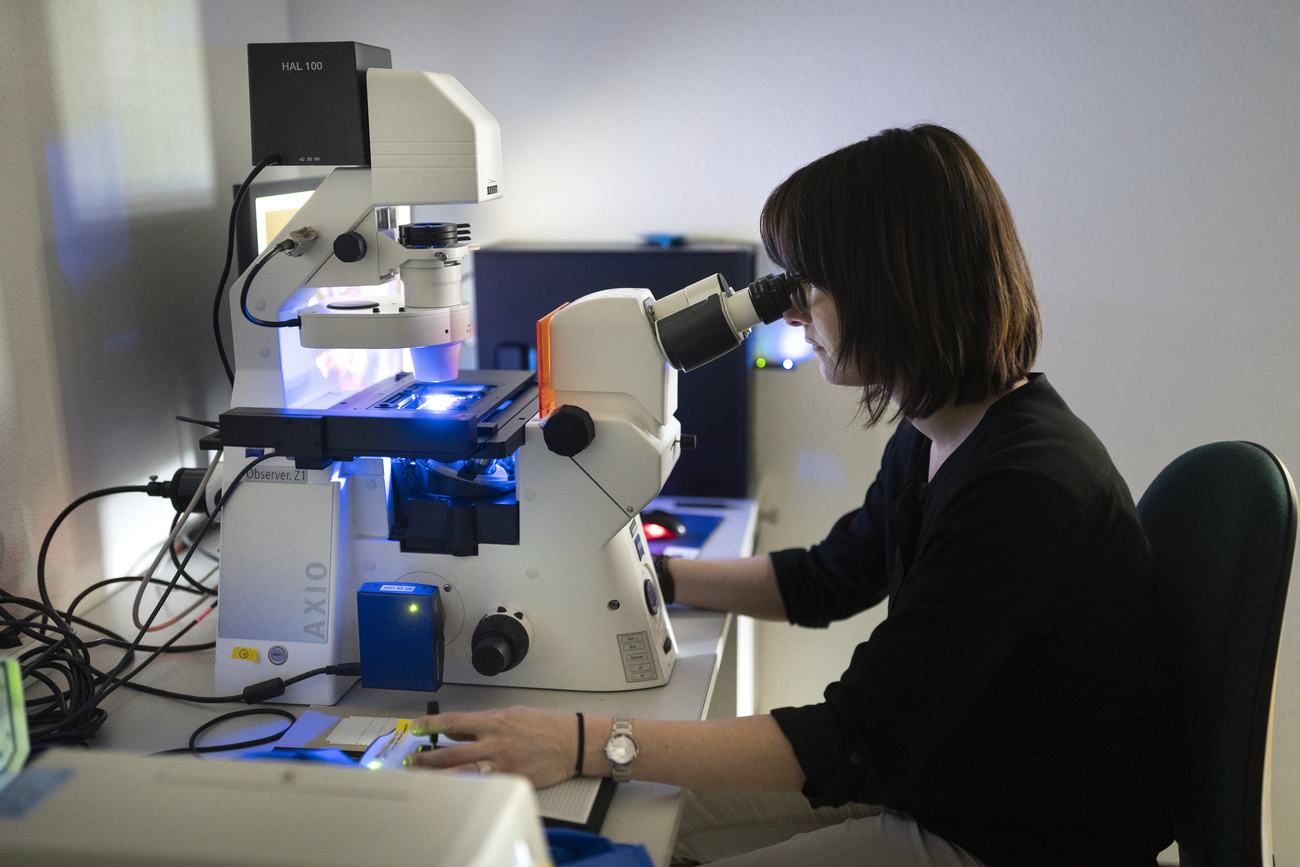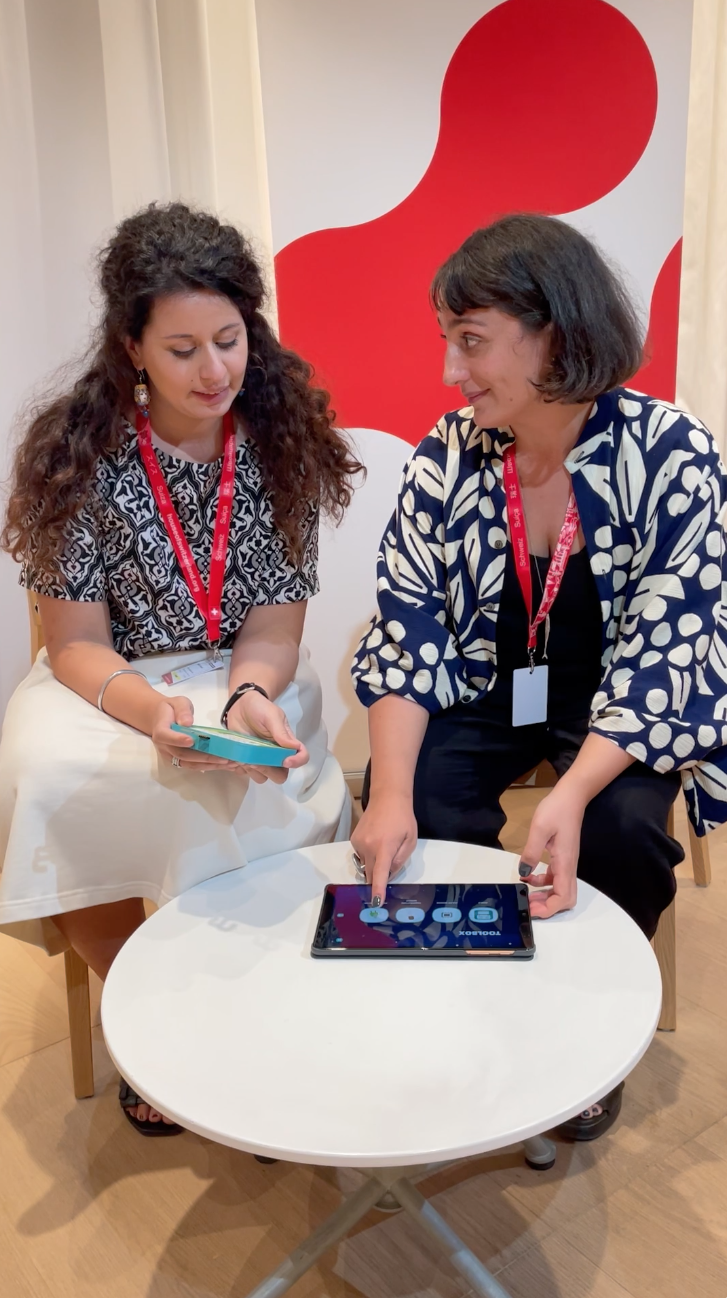How Switzerland is trying to bridge the science gender gap

Female scientists are still underrepresented in leadership roles in Swiss universities. Grants for women are driving change, but that might not be enough.
As our video call starts, one thing catches the eye. The office desk is clear and the whiteboard on the wall behind Cristina Benea-Chelmus is unusually void of marks, mathematical formulas or graph – the typical trademarks of a scientist.
On January 1, 2022, Benea-Chelmus officially started a professorship at the Swiss Federal Institute of Technology Lausanne (EPFL), having just moved from Harvard University in the United States.
She has yet to make her mark in her new office. As an experimental engineer, she will study miniaturised devices that link electronic and optical properties, with the aim to optimise them. Her research may ultimately lead to useful applications in self-driving cars and augmented reality.
Benea-Chelmus joins an increasing, but relatively small number of female colleagues at EPFL’s School of Engineering. There are currently 21 female and 68 male professors.

The gender gap in leadership roles is also evident at the national level. Women make up only 24% of professors at Switzerland’s 12 universities, according to the European Commission’s latest “She Figures” reportExternal link. This percentage lies below the median for the 27 EU member countries (26%).
The gender gap affects all countries and disciplines and is mainly due to a phenomenon called the leaky pipeline: the number of women leaving academia is higher than the rate of attrition among men, despite more women graduating from university.
In surveysExternal link, women have linked their departure to issues in reconciling family and academic life, lack of female role models and networking plus gender bias in the hiring and promotion processes. Switzerland also suffers from specific structural issues: childcare provision is scarce and very expensive compared to other European countries and well-paid jobs in industry offer an attractive alternative for academics.
In the STEM disciplines (science, technology, engineering and mathematics), there are even fewer female professors. In 2020, fewer than 20% of professors were female, according to the Swiss Federal Statistical Office (FSO)External link. Studies repeatedly cite cultural stereotypes as one of the reasons for the gender gap.
STEM is seen as a “male domainExternal link”, which makes it less likely to appeal to female students to begin with. As for Benea-Chelmus, she always felt at ease with her engineering studies, since both her parents are engineers.
Progress has been made. Official figures show that women are earning more PhDs in physics and mathematics. And universities are appointing more women as professors in STEM than before. The federal technology institute ETH Zurich and EPFL respectively hired on average 36% and 33% women between 2018 and 2020.
To increase the number of women professors and, above all, to retain women in academia, research institutions and foundations in Switzerland and the EU have introduced further measures, such as grants, mentoring and childcare support.
Grants for female researchers
Benea-Chelmus participated in various mentoring programmes during her early career and, in 2020, she applied for the PRIMA grant. The grant was launched in 2017 by the Swiss National Science Foundation (SNSF) to support women with high potential for a professorship.
Successful grantees receive up to CHF1.5 million ($1.6 million) in funding, intended to cover their salary and project costs for five years within a Swiss research institution.
Benea-Chelmus received the PRIMA grant just months before she was offered the professorship at EPFL, in what turned out to be an exceptionally fast career move. The grant offers her financial independence.
“All gender measures are important, but funding from the PRIMA grant is a game changer for my career. It allows me to start hiring students and post-docs, move my research forward, and seek results. It’s the best start I could imagine”, she said.
Not far from Lausanne, at the University of Geneva, Camilla Jandus specialises as an assistant professor in tumor immunology. Jandus received the PRIMA grant in 2017 and is enthusiastic about the networking and coaching opportunities attached to it. A private coach gave her insights into staff management, laboratory set-up and hiring interviews.
“Once you become a professor, you go from being a post-doc responsible only for your own work to managing a group of people,” said Jandus. As a mother of three, she believes that good organisation is crucial for balancing work and family life.
But Jandus cautions about possible drawbacks of the grant scheme. The university that hosts a PRIMA grantee is not obliged to hire them afterwards. In addition, the more established SNSF or European Research Council grants are sometimes viewed as having a higher status.
“Given the still limited awareness of the PRIMA funding scheme, PRIMA holders may be considered as junior group leaders and be left out of decision-making commissions,” she said.
Tackling gender bias
Sometimes grants alone are not enough to fully integrate women in academia. That’s why Ursula Keller, who became ETH Zurich’s first female professor of physics in 1993, established the ETH Women Professor ForumExternal link (WPF) in 2012.
Her aim was to tackle other barriers, improve corporate governance and introduce women scientists as role models – a key factor in motivating younger researchers. More than 80% of women professors at ETH Zurich and EPFL have joined the forum and take part in networking events.

More
Top science body to boost women’s representation
In a 2018 surveyExternal link, WPF members complained of inadequate representation of women in higher ranks, an unsupportive work environment, and unconscious bias in hiring and promotion processes. Since then, ETH has implemented training courses on gender bias for professors and selection committees. EPFL created a commission to address the challenges and offer recommendations.
“The fundamental problem is that women do not fit the stereotype of what a professor is expected to look like and, as a result, they suffer from implicit bias,” professor Rizlan Bernier-Latmani, who led the EPFL commission, said at the time. “A good way to remove these perceptions is to increase the number of women professors so that they are numerous enough to no longer be the exception.”
Changing culture
But Keller thinks that more is needed to push women in STEM, especially at the top professorship level where there is an even wider gender gap between women and men. In a letter published in JanuaryExternal link, Keller asked for better governance, in the form of more control measures and transparency of resource allocation and decision making.
“The current culture with informal, mostly male-dominated power networks with inherent gender biases, limited accountability and transparency of decisions and in resource distribution, negatively affects women and discourages the next generation from taking on leadership positions,” she writes.
International Day of Women and Girls in Science
This article belongs to a four-part series by SWI swissinfo.ch to mark the United Nations’ International Day of Women and Girls in Science on February 11.
Cultural change seems to be the key factor among the people contacted by SWI swissinfo.ch. “Having a parallel world of women and men won’t solve the problems. In a long-term perspective, we should include men in the discussions about the current issues,” said Jandus.
Benea-Chelmus finds herself at the beginning of a long journey. She will have to fill her empty office at EPFL, set up a laboratory, and hire PhD students. She feels she benefited from being given a good degree of independence during her PhD and postdoctoral positions at ETH Zurich and Harvard University.
“It was really important to test myself, initiate collaborations, and prove that I could do it. It was then that I thought this job can be really fun,” she says, adding that it was important to be among other women and people from all walks of life. “Diversity helps science!”
Promoting women in science
From 2022, the Gender Equality Plan (GEP)External link has become mandatory for universities and research institutions in EU member states and associated countries participating in Horizon Europe, the EU’s key programme for research and innovation. Switzerland lost its Horizon Europe status when negotiations with the EU over a broad political treaty broke down in May 2021.
Some 95% of higher education institutions in Switzerland detail gender equality strategies on their websites. Measures include gender monitoring, counselling, workshops on soft skills, mentoring, networking, and workshops on gender bias.
A series of funding grants aimed at women are available in Switzerland, mainly from the Swiss National Science Foundation (SNSF)External link. The Flexibility grant helps doctoral students and post-doctorates with children to cover external childcare costs or salary costs for supporting staff. The Gender Equality grant offers young researchers CHF1,000 per project year that can be used for mentoring, coaching, courses, conferences, and workshops.
The SPIRIT funding programme, launched in 2019, promotes collaborative, international research with a focus on promoting women scientists and gender-specific research questions. Funding ranges from CHF50,000 to CHF500,000 over a two-to-four-year period. The PRIMA grant, launched in 2017, supports women with a high potential for a professorship. Successful grantees receive up to CHF1.5 million in funding to cover their salary and project costs for five years within a Swiss research institution.
Finally, there’s the H.I.T. ProgramExternal link (High Potential University Leaders Identity & Skills Training), a collaboration of ten cantonal universities and the two federal institutes of technology. Women professors receive a training package, individual coaching, professional networking, peer mentoring and leadership shadowing to prepare them for leading positions in academia and to help them develop gender equality and diversity competences.

In compliance with the JTI standards
More: SWI swissinfo.ch certified by the Journalism Trust Initiative













You can find an overview of ongoing debates with our journalists here . Please join us!
If you want to start a conversation about a topic raised in this article or want to report factual errors, email us at english@swissinfo.ch.